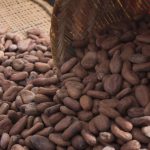
Survive the collapse with these 10 rabbit breeds
Tuesday, July 31, 2018 by Russel Davis
http://www.starvation.news/2018-07-31-survive-the-collapse-with-these-10-rabbit-breeds.html

American homesteaders raise rabbits primarily for two reasons: meat and pelt. Rabbit meat is highly-valued for its flavor, which goes well with soups, stews, and roasts. On the other hand, rabbit fur is valued for its smooth texture, making it ideal in creating animal pelt products. A large number of rabbit breeds can be raised for both purposes, which in turn may ensure survival at the event of a collapse. (Related: Here are 10 trees that may boost your survival chances.)
Superior rabbit breeds for meat, fur
Three rabbit breeds have gained greater popularity compared with others, mainly due to their flexibility as both meat and fur producers.
- New Zealand Whites — This breed is one of the most commonly raised varieties across the country. Touted as the top rabbit meat in the U.S., this breed is widely sought for their excellent meat proportion that may weigh between nine to 12 pounds. New Zealand Whites are also known for their gentle demeanor, which makes them easier to manage compared with other breeds.
- Rex — Rex rabbits have smaller bodies compared with New Zealand Whites. When matured, Rex rabbits may weight between eight to 10 pounds. What the rabbits lack in size are greatly compensated by their soft fur that yields superior pelts. This breed is also known to be more resistant to heat compared with New Zealand Whites.
- Californian — Like the other two breeds, Californian rabbits are prized for their meat yield that may weight around eight to 12 pounds. This breed was a result of cross breeding between Chinchilla and New Zealand White varieties, which says a lot about the quality of their fur.
Other important rabbit breeds
Rabbits are among the most sought-after homesteading commodities due to their relatively low maintenance and upkeep. Here are a few other equally important breeds that every homesteader should take note.
- American Chinchilla — This rabbit breed weighs as much as nine pounds, and are greatly valued for their meat.
- Champagne D Argent — This rabbit breed has been raised since the 1630’s mainly for meat production. Rabbit meat taken from this breed has attained global popularity over the years.
- Satin rabbits — Satin are known to produce a good amount of meat, thanks largely to their large and heavy bodies.
- Cinnamon rabbits — Cinnamons are known to yield good quality meat, and are commercially bred just for this reason. This breed is a cross between the New Zealand White and American Chinchilla.
- Flemish giants — This immense rabbit breed may weigh well above 20 pounds. This breed features a large body and broad skeleton structure, which may indicate their voracious appetite.
- Palomino rabbits — Palomino rabbits may weight between eight to 11 pounds, and are noted for their high quality meat. This breed has a generally good temper, making them ideal in homesteading.
- Silver foxes — This rare breed may weigh between 10 to 12 pounds, making them an excellent homesteading staple for future survival.
Rabbits have played an important role in homesteading in the U.S., especially in meat consumption and pelt production. In fact, the Agricultural Marketing Resource Center (AgMRC) noted that rabbit production showed a steady increase over the years. According to the center, more than 4,300 U.S. farms sold nearly 890,000 rabbits in 2002 alone. The center also revealed that more than 112,000 rabbits were sold on 300 farms in Pennsylvania during the same period, making it the top rabbit producing state across the country.
Rabbit production showed an even further increase in 2007, data from the AgMRC revealed. According to the center, more than 27,000 farms raised rabbits and more than 6,800 farms sold nearly 980,000 rabbits in the same year. Arkansas led this influx, selling more than 97,700 rabbits that year, followed by Pennsylvania at nearly 92,400 rabbits, and California at more than 79,000 rabbits. These numbers excluded rabbits that were raised in backyards for personal consumption.
Sources include:
Tagged Under: Tags: homesteading, Off Grid living, pelt, rabbit fur, rabbit meat, rabbits, starvation, survival, survival food





